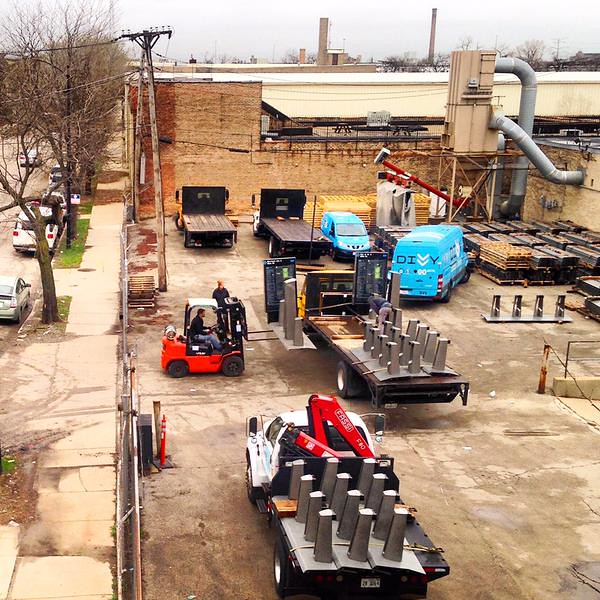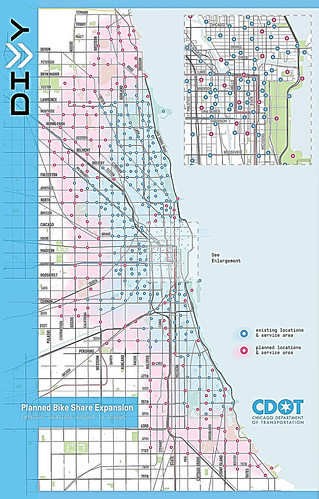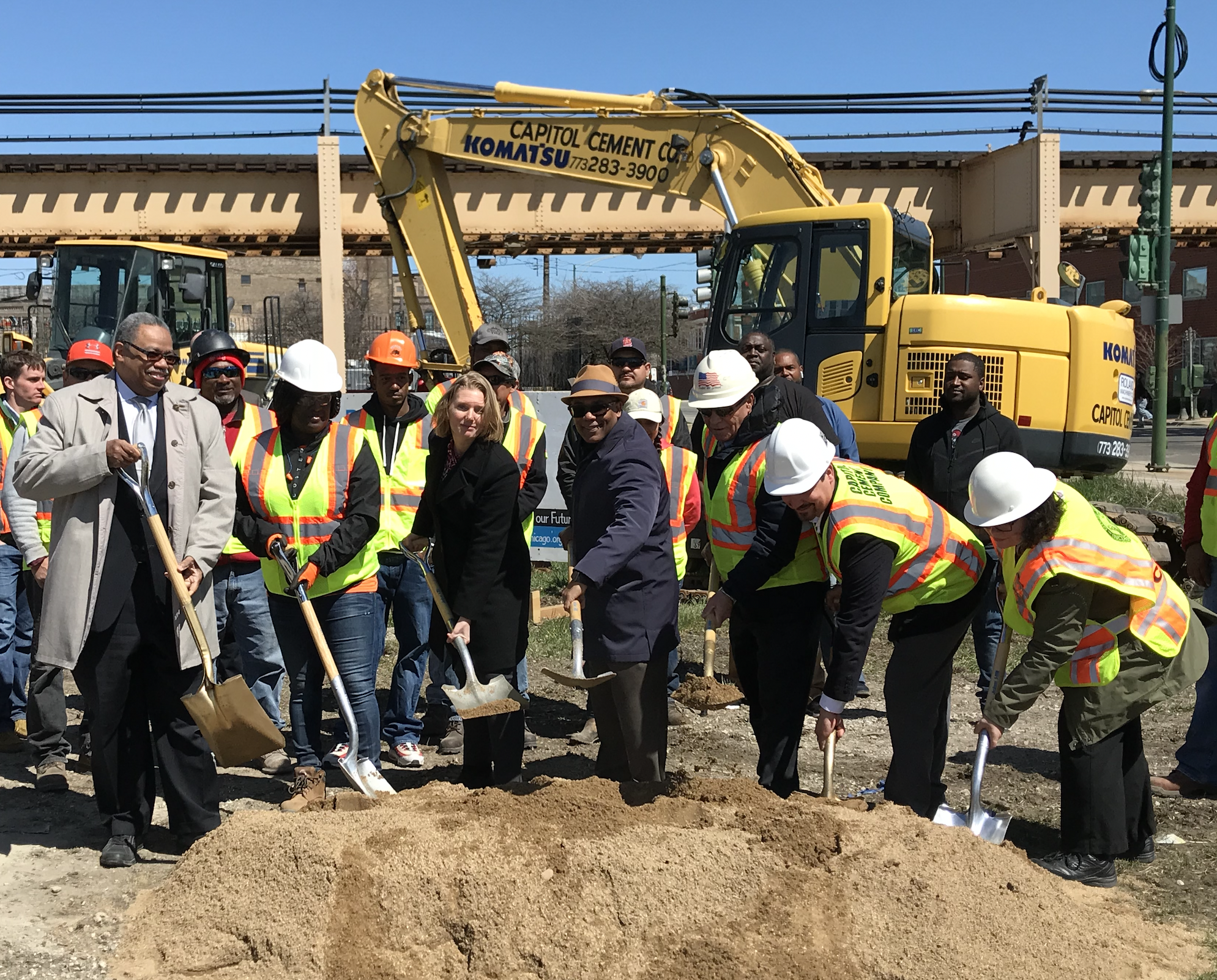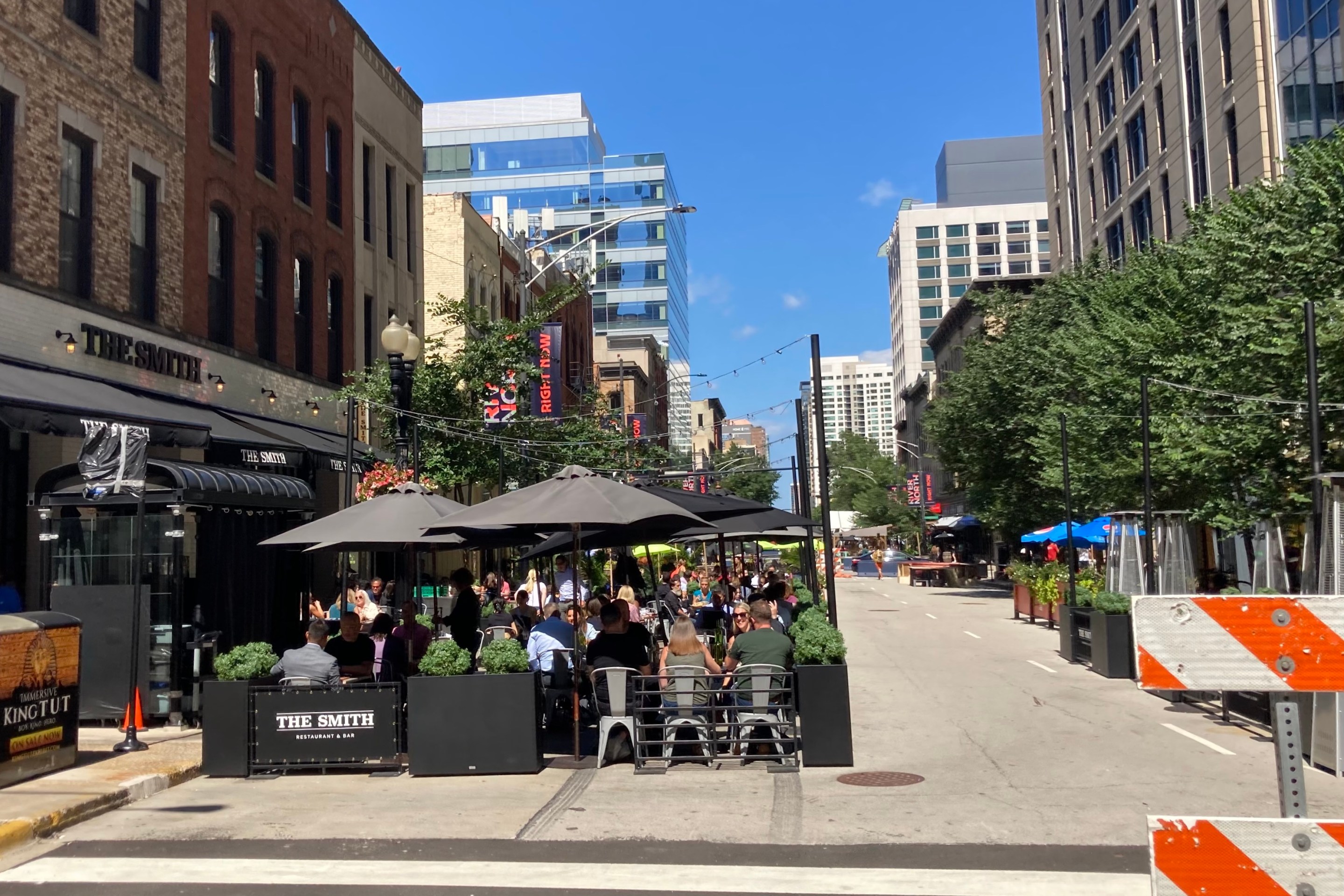CDOT’s Sean Wiedel Provides an Update on Divvy Installation, Equity Efforts
3:48 PM CDT on April 24, 2015

“With all the challenges we’ve had with the equipment supplier, it’s gratifying to finally see the new Divvy stations on the ground,” said Chicago Department of Transportation assistant commissioner Sean Wiedel regarding the city's current bike-share expansion. “People are obviously clamoring for Divvy, so it’s exciting to be able to meet that demand.”
CDOT began installing new docking stations last week in Bronzeville and Hyde Park. They’re planning on expanding the system from its 2013 rollout of 300 docking stations and 3,000 bikes to 476 stations and 4,760 bikes by early June, in time for the annual Bike to Work Rally. The service area will nearly double, from 44.1 square miles, or 19 percent of the city’s geographic area, to 86.7 square miles, or 40 percent.
As Mayor Rahm Emanuel has been quick to point out, this means Chicago will have more stations and a larger service area than any other North American city, although New York and Montreal will still have far more bikes. The number of Chicago wards served will grow from 13 to 33 out of 50. The portion of the population that lives in bike-share coverage areas will expand from about 33 percent to 56 percent, so most Chicagoans will live close to a station.
Crews are currently installing five-to-ten stations a day and working six days a week, Wiedel said. About 60 stations have been installed so far. Almost all South Side installations should be complete today, and then work will begin on the West Side, and finally the North Side. Downtown installations are being done on weekends.
The system was supposed to expand last year. However, the January 2014 bankruptcy of the equipment supplier, Montreal-based Public Bike Share System Company, put a wrench in that plan. PBSC has new ownership now, and Wiedel says the expansion is going much smoother than the original roll-out. “The previous round was stressful due to supply chain issues, but this time the process has been low-key. All equipment has arrived on time.” PBSC will also provide upgrade software for Divvy within the next six-to-twelve months, Wiedel said.
He added that the October 2014 sale of the former Divvy concessionaire, Portland-based Alta Bicycle Share, to NYC-based Motivate, also greased the wheels. “There has been much more corporate support for the Divvy employees like [general manager] Elliot Greenberger and [operations manager] Jon Mayer.”
After Divvy launched almost two years ago, there were complaints that the system focused on Chicago’s more affluent areas. While the coverage area was split evenly between the North and South Sides, stations were generally spaced every quarter mile downtown and in North Lakefront neighborhoods, but every half mile on the South Lakefront. At the time, CDOT argued that it was necessary to concentrate the system in areas with a high density of people and destinations in order to make it financially sustainable.
The expansion brings bike-share to many new neighborhoods, including a number of low-income South and West side communities like Woodlawn, Washington Park, Canaryville, and East Garfield Park. Stations are generally located every half mile in all parts of the new service area. “It’s the same [density] in all the neighborhoods, no matter who lives there,” said Wiedel. About 80 percent of the new stations are going to terra nova; the remaining 20 percent represent infill stations downtown, in Bronzeville, and in Hyde Park.
Of course, simply dropping off a station in a neighborhood doesn’t ensure it will get good use. CDOT has dispatched its Bicycling Ambassadors outreach team to talk up the benefits of bike-share to local merchants and give residents tips on using the system effectively. Presumably, they’re emphasizing that the system is most affordable when it’s used for short commutes and errands, rather than long cruises.
To further promote the system in new communities, Divvy is holding a “Design-a-Divvy” contest, in which high school students can submit basket and fender art that reflects their communities. Ten winners will be announced in June.
Despite these outreach efforts, the bike-share system’s requirement that users have a credit card will continue to be a barrier for unbanked Chicagoans and limit use in low-income areas. Wiedel promised that CDOT is taking concrete steps to address this issue, and will have a major announcement by early summer.
CDOT’s news release features an endorsement from Slow Roll Chicago’s Oboi Reed (a Streetsblog Chicago board member), who has advocated for making Divvy more equitable by increasing access on the South and West Sides. “We are especially happy to see Divvy expand to more communities of color and low- to moderate-income neighborhoods,” he said. “We look forward to helping grow the system even more in underserved communities.”
However, some residents of outlying neighborhoods are impatient for Divvy to reach all parts of the city. 29th Ward alderman-elect Chris Taliaferro recently told DNAinfo.com he’s frustrated that the system isn’t coming the Austin neighborhood in this round of installations. "We have to put it in the mayor's mindset that Austin is part of the city of Chicago," Taliaferro told DNA.
However, Austin and other parts of the West Side will be getting stations next spring as Divvy expands into Oak Park and Evanston, two suburbs that are providing funding for their own stations, Wiedel said. Last September, ex-Governor Pat Quinn announced a $3 million state grant that would pay for an additional 75 stations: 12 in Oak Park, eight in Evanston, and 55 in Chicago. After a delay, the state grant agreement was just signed this morning, Wiedel said.
There’s a five-month turnaround time for equipment from PBSC, so, rather than install the 75 stations in the late fall, Divvy will wait until spring, when warmer weather will help ensure a successful launch. Since incumbent 29th Ward alderman Deborah Graham will be in office until May 18, CDOT hasn’t yet informed Taliaferro about the plan. “After that date, we’ll be working with the new alderman and sharing this good news,” Wiedel said.
Bike-share user surveys in other cities have revealed that membership tends to be disproportionately young, white, male, affluent, and college educated, spurring efforts to correct that imbalance. While CDOT has stats on age and gender based on Divvy membership applications, it has yet to release a full report on demographics. CDOT did send surveys to all members in early 2014 and early 2015 seeking this information, as well as info about their commuting habits, but the agency is still compiling the data, Wiedel said. He promised this info will be released in the future.
In addition to editing Streetsblog Chicago, John writes about transportation and other topics for additional local publications. A Chicagoan since 1989, he enjoys exploring the city on foot, bike, bus, and 'L' train.
Read More:
Stay in touch
Sign up for our free newsletter
More from Streetsblog Chicago
Pressure is mounting to replace embattled CTA President Dorval Carter
Here's a look at what elected officials and other media outlets have said about the issue recently.
Service boost means BNSF Line will get Metra’s first-ever across-the-board weekend schedule, starting April 29
In addition, Halsted Street station will get weekend service, and Downers Grove's Fairview stop will become an off-peak stop.
Tasty news: Friedman Properties is trying to break the Clark outdoor dining stalemate by applying for street closure permits
Mayor Johnson's administration and Ald. Reilly haven't yet found common ground on bringing back the popular car-free zone. Will this make the difference?




